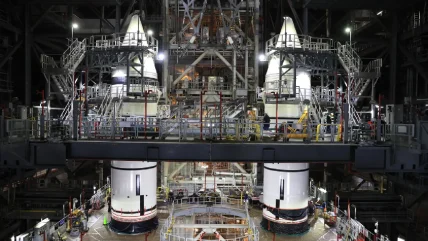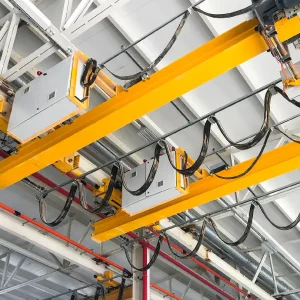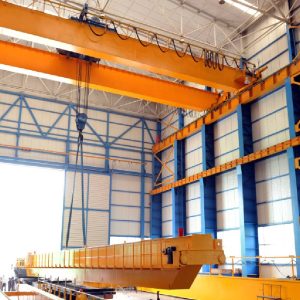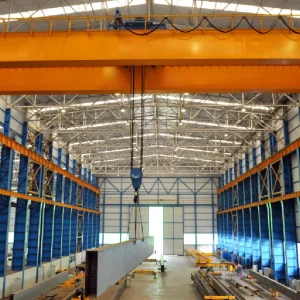
US federal space agency NASA has completed the stacking of twin solid rocket boosters for the Artemis II Space Launch System (SLS) using overhead cranes.
NASA engineers and technicians carried out the stacking operations inside the Vehicle Assembly Building (VAB) at Kennedy Space Centre in Florida.
The VAB is equipped with five overhead cranes, which facilitate precise handling and assembly of heavy components during the assembly.
The overhead cranes are crucial for lifting and positioning the ten booster segments, five for each twin solid rocket booster, onto the mobile launchers.
NASA started the stacking operations in November last year, where technicians used a large overhead crane system to lift each booster segment into place on the mobile launcher.
Mobile launcher is a 380ft high structure designed to process, assemble, and launch the SLS rocket and Orion spacecraft.
The 177ft tall twin solid rocket boosters will provide more than 75% of the total SLS thrust during liftoff from NASA Kennedy’s Launch Pad 39B.
NASA, in its statement, said: “With stacking of the forward assemblies, or nose cones, complete, the last segments have been integrated to complete the booster configuration.
“Each forward assembly contains an aerodynamic top, a forward skirt housing avionics, and frustum housing motors that allow the boosters to separate from the SLS core stage after launch.”
Artemis II test flight will be NASA’s first mission with the crew under the Artemis campaign.
It is sending astronauts Reid Wiseman, Victor Glover, and Christina Koch, along with CSA (Canadian Space Agency) astronaut Jeremy Hansen, on a ten-day expedition around the Moon.
Through the Artemis campaign, NASA astronauts will explore the Moon for scientific discovery, and potential economic benefits, and clear the path for crewed missions to Mars.






